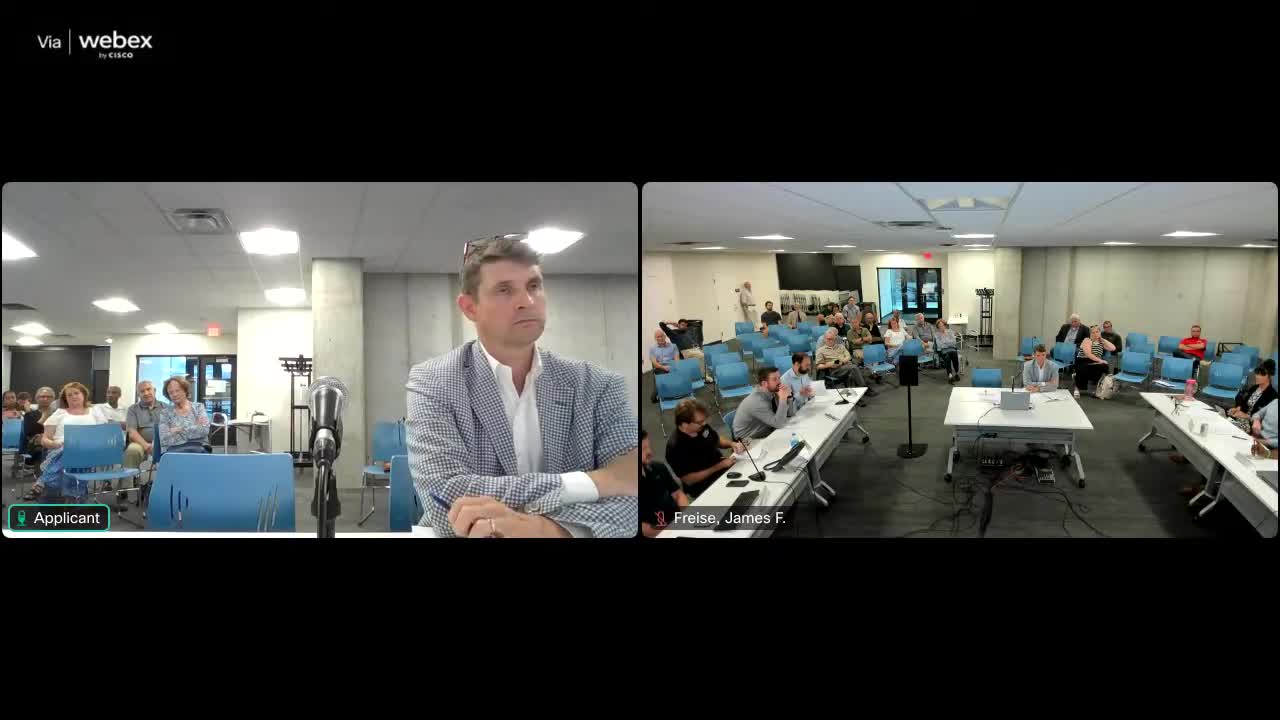Franklinton Area Commission reviews mixed-use development proposal for 550 West Broad Street
June 25, 2025 | Columbus City Council, Columbus, Franklin County, Ohio
This article was created by AI summarizing key points discussed. AI makes mistakes, so for full details and context, please refer to the video of the full meeting. Please report any errors so we can fix them. Report an error »

In a recent special meeting of the Board of Zoning Adjustment in Columbus, Ohio, community members and city officials gathered to discuss a proposed mixed-use development at 550 West Broad Street. The site, currently undeveloped, is situated in a bustling area surrounded by residential homes, an office building, and a historical fire station, which is set to become the new headquarters for the Columbus Historical Society.
The proposal includes the construction of a building featuring 60 apartment units and commercial spaces on the ground floor. However, the project has sparked significant debate, particularly regarding the requested variances that would allow for reduced parking setbacks and landscaping requirements. The developers argue that the unique layout of the site, which is bordered by streets on all sides, presents challenges in meeting standard zoning codes.
During the meeting, several community members voiced their concerns about the potential impact of the development on local traffic and parking availability. One resident highlighted that the proposed building would only provide 40 parking spaces for 60 units, raising fears of congestion in an already busy area. Others expressed worries about the loss of green space, as the developers seek to reduce the number of required trees and landscaping features.
Supporters of the project, including city staff and the East Franklinton Review Board, have recommended approval, citing the need for more housing in the area and the project's alignment with urban development goals. They emphasized that the design includes measures to mitigate visual impacts, such as a screening wall to obscure parking areas.
As discussions unfolded, the importance of fostering communication between developers and community members was underscored. A representative from the board encouraged all parties to extend an olive branch and work towards a collaborative solution, reflecting a shared commitment to the neighborhood's future.
The meeting concluded with a call for further dialogue, leaving residents and officials alike pondering the balance between development and community preservation in Columbus's evolving landscape. As the proposal moves forward, the outcome will likely shape not only the immediate area but also the broader conversation about urban growth and historical integrity in the city.
The proposal includes the construction of a building featuring 60 apartment units and commercial spaces on the ground floor. However, the project has sparked significant debate, particularly regarding the requested variances that would allow for reduced parking setbacks and landscaping requirements. The developers argue that the unique layout of the site, which is bordered by streets on all sides, presents challenges in meeting standard zoning codes.
During the meeting, several community members voiced their concerns about the potential impact of the development on local traffic and parking availability. One resident highlighted that the proposed building would only provide 40 parking spaces for 60 units, raising fears of congestion in an already busy area. Others expressed worries about the loss of green space, as the developers seek to reduce the number of required trees and landscaping features.
Supporters of the project, including city staff and the East Franklinton Review Board, have recommended approval, citing the need for more housing in the area and the project's alignment with urban development goals. They emphasized that the design includes measures to mitigate visual impacts, such as a screening wall to obscure parking areas.
As discussions unfolded, the importance of fostering communication between developers and community members was underscored. A representative from the board encouraged all parties to extend an olive branch and work towards a collaborative solution, reflecting a shared commitment to the neighborhood's future.
The meeting concluded with a call for further dialogue, leaving residents and officials alike pondering the balance between development and community preservation in Columbus's evolving landscape. As the proposal moves forward, the outcome will likely shape not only the immediate area but also the broader conversation about urban growth and historical integrity in the city.
View full meeting
This article is based on a recent meeting—watch the full video and explore the complete transcript for deeper insights into the discussion.
View full meeting
